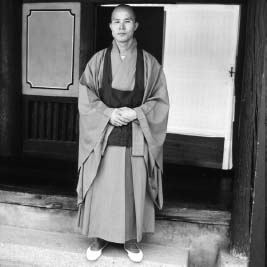BuddhismHistory and Sources |
How did Buddhism become important in China, Korea, and Japan? |
Buddhism’s spread across north and east Asia was an extended and complex process that was part of the “northern transmission” begun as early as the reign of Ashoka (r. 270-230 B.C.E.). Serious missionary efforts commenced in China sometime during the first century C.E. Within a century or so, a new wave of monk-translators from India was engaged in large-scale proselytizing among the Chinese. Buddhism spread rapidly and flourished in the form of several denominations and schools. Some estimate that over half the population had accepted the new tradition by around 450 C.E. A major persecution in 845 under a Daoist emperor did serious damage to all but the Pure Land and Ch’an (Zen) lineages.
A Chinese missionary monk introduced Buddhism to Korea around the late fourth century. By the mid-sixth century, Buddhism enjoyed royal patronage and spread throughout the Korean peninsula. In about 552 the Korean monarch sent the Japanese emperor, as a gift, an image of the Buddha and some sacred texts. The new faith soon found itself welcome, and adapted rapidly in the Land of the Rising Sun.
Monks from China and Korea continued to bring the teachings of various denominations to Japan during the seventh and eighth centuries. Those schools proved attractive to relatively small numbers of people. So during the early ninth century, three Japanese monks who had been studying in China brought back simpler teachings with greater popular appeal. Several schools based on Pure Land teaching enjoyed considerable success over the next three hundred years. Then a new wave of Buddhist growth and development washed over Japan in the late twelfth and early thirteenth centuries. Honen (1133-1212) established the Pure Land school as a distinct denomination, and two Japanese monks founded the main branches of Zen Buddhism.

A Monk of the Son (Korean for Zen) Buddhist order in front of his cell at the To Son Sa temple in the hills overlooking Seoul, Korea.
